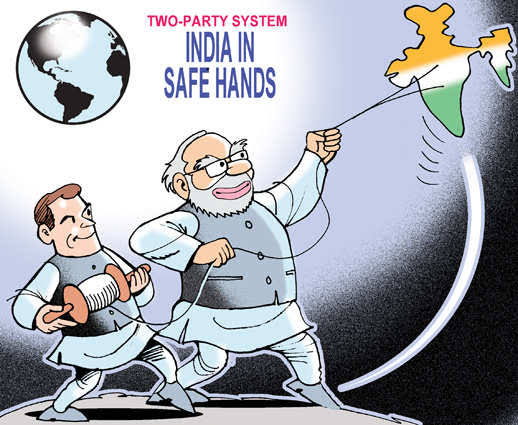Author: Ritika Singh, Sister Nivedita University
Introduction
The case of Shayara Bano v. Union of India & Ors. (2017) is one of the most significant judgments in the constitutional history of India as it invalidated the practice of “Triple Talaq” (Talaq-e-Biddat) among Indian Muslims.
Triple Talaq refers to a practice under Islamic personal law where a Muslim man could divorce his wife by pronouncing the word “Talaq” three times in one sitting, either orally, in writing, or even electronically (e.g., via WhatsApp or letter).
This form of instant divorce was seen as arbitrary, unjust, and discriminatory toward Muslim women.
In this case, the Supreme Court of India, through a Constitution Bench of five judges, declared this practice unconstitutional, citing violations of fundamental rights, especially equality (Article 14), non-discrimination (Article 15), and dignity (Article 21) of Muslim women.
2. Facts of the Case:
• Petitioner: Shayara Bano, a Muslim woman from Uttarakhand, was married to Rizwan Ahmed for 15 years.
• In 2016, her husband divorced her by uttering ‘talaq’ thrice in a single sitting without her knowledge, consent, or participation.
• This divorce was given under Talaq-e-Biddat, which is not sanctioned by the Quran, though it was historically accepted in certain Hanafi schools of Islamic jurisprudence.
• Shayara Bano challenged this form of divorce, stating that it was:
• Unilateral and arbitrary
• Denied her right to equality, dignity, and freedom
• Against the principles of natural justice
• She also challenged polygamy and Nikah Halala, but the Court focused only on Triple Talaq.
3. Issues Involved:
The Supreme Court framed and considered the following constitutional and legal issues:
• Whether the practice of Triple Talaq (Talaq-e-Biddat) is an essential religious practice under Islam and protected under Article 25 (Freedom of Religion) of the Constitution?
• Whether personal laws (Muslim Personal Law in this case) are subject to constitutional scrutiny and can be tested on the touchstone of fundamental rights?
4. Observations by the Supreme Court:
The 5-Judge Constitution Bench consisted of:
• Chief Justice J.S. Khehar
• Justice Kurian Joseph
• Justice R.F. Nariman
• Justice U.U. Lalit
• Justice Abdul Nazeer
The Bench gave a split verdict: 3:2 majority ruled Triple Talaq unconstitutional
●The Majority View by 3 Judges: Justices Nariman, Lalit, and Kurian Joseph):
● Justice R.F. Nariman and Justice U.U. Lalit:
• It is manifestly arbitrary and violates Article 14 (Right to Equality) of the Constitution.
• Just because a practice is followed for a long time does not make it sacred or immune from constitutional scrutiny.
• Since it allows a Muslim man to break a marriage unilaterally without any attempt at reconciliation, it is discriminatory.
● Justice Kurian Joseph:
• Stated that Triple Talaq is against the tenets of the Quran, and hence un-Islamic.
• Argued that only those practices rooted in the Quran are valid under Islamic law.
• Since Talaq-e-Biddat is not prescribed in the Quran, it cannot be considered legitimate.
● Minority View (2 Judges: CJI J.S. Khehar and Justice Abdul Nazeer):
• Held that Triple Talaq is a part of Muslim Personal Law, and thus protected under Article 25 (freedom of religion).
• The judiciary should not interfere in matters of personal law, and reform should be left to the legislature.
• However, they suggested that the practice be stayed for six months, and Parliament should bring in a law regulating Triple Talaq.
5. Conclusion:
• By 3:2 majority, the Supreme Court declared the practice of Triple Talaq unconstitutional.
• The majority held that it violated fundamental rights, especially Articles 14 and 21, and was not essential to Islamic faith.
• This judgment gave a strong message in favor of gender justice, equality, and constitutional supremacy.
• The decision was widely appreciated as a progressive step in the protection of Muslim women’s rights.
6.FAQS
Q1 What do you mean by Triple Talaq?
Triple Talaq, also known as Talaq-e-Biddat, Triple talaq is a way in which a Muslim man could divorce his wife instantly by saying the word “talaq” (divorce) three times in a row, in one sitting, either orally, in writing, or even via electronic communication. This form of divorce was irrevocable and did not require the wife’s consent or approval from a legal authority.
Q2 Is there any other form of talaq in Muslim law? If yes, what are they?
Yes, apart from Triple Talaq, there are other forms of divorce recognized under Muslim personal law. They can be classified are as followed:
A. By Husband (Unilateral Divorce):
Talaq-e-Ahsan:
Most approved form.
One pronouncement of talaq during a tuhr (period of purity), followed by abstinence during the iddat period (about 3 months).
Can be revoked during iddat.
Talaq-e-Hasan:
Talaq pronounced once every month over three successive tuhrs.
If revoked before the third talaq, marriage continues.
Approved and revocable.
Talaq-e-Biddat (Triple Talaq):
Instant and irrevocable (now illegal in India).
Not approved by Quran.
B. By Wife (With or Without Delegated Power):
Talaq-e-Tafweez:
Husband delegates the right to wife to divorce herself under certain conditions.
Lian:
Divorce initiated by wife when husband falsely accuses her of adultery.
C. By Mutual Consent:
Mubarat:
Both parties wish to end the marriage. Mutual agreement leads to divorce.
Khula:
Wife initiates divorce by offering consideration (like returning dower/mahr) to the husband.




